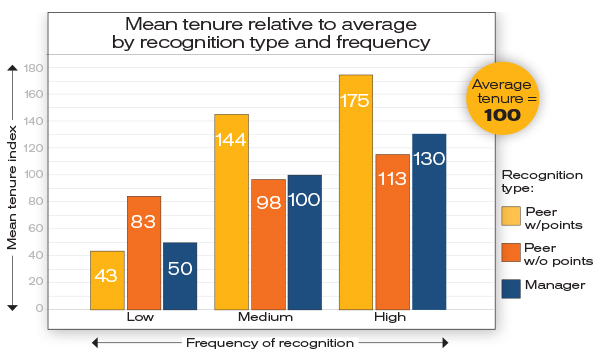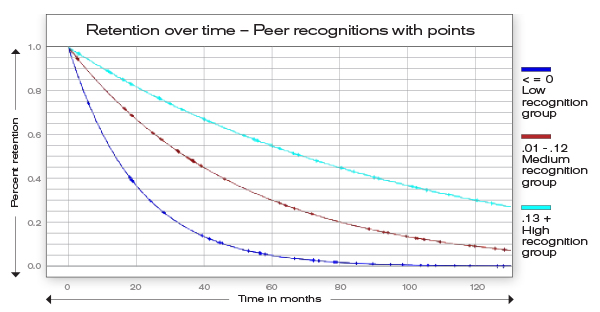In today’s competitive job market, recognizing your employees’ efforts isn’t just a nice-to-have – it’s a necessity. Traditional employee recognition programs include manager discretionary and peer-to-peer recognitions. But there’s a game changer you might be missing – peer-to-peer recognition with points that can be used for experiences, merchandise and learning opportunities. Incorporating tangible rewards into peer-to-peer recognition can transform your workplace culture and keep your best talent engaged.
Why does peer recognition with rewards work?
BI WORLDWIDE Canada’s extensive analysis of over 3,000 employees revealed a compelling trend: employees who received peer-to-peer recognition with points stayed with their companies significantly longer than those who did not receive any reward points. This method even outperformed traditional manager recognition.
Imagine this: your employees not only feel appreciated but also have something tangible to show for it. The data shows that those who received frequent recognition with points had much higher retention rates.

The same result can be seen when we look at retention curves that show the percentage of employees remaining employed over time. The High Recognition Frequency group has dramatically higher retention while employees in the Low Recognition Frequency group depart at a very high rate with few remaining after two years.

How do I implement a successful peer-to-peer recognition program?
1. Allocate budget for peer recognitions.
Investing in a recognition program that includes points for peer-to-peer recognition is crucial. Set aside a portion of your budget to ensure that these recognitions are meaningful.
2. Train your team.
Educate your employees about the importance of recognizing their peers. Training sessions can help them understand how to give effective recognition that truly makes a difference.
3. Monitor and adjust.
Regularly review the effectiveness of your recognition program. Collect feedback and adjust the program as needed to keep it relevant and impactful.
4. Share real-world success stories.
Many companies have experienced the benefits of incorporating peer-to-peer recognition programs. Sharing stories of those companies can boost the involvement of your employees. For example, one company experienced a 20% increase in employee retention after introducing points-based recognition. Their employees felt more valued and engaged, leading to a more positive workplace culture.





